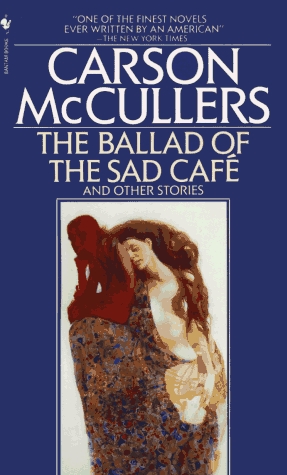 The Ballad of the Sad Café by Carson McCullers (1943). This collection assembles McCullers’s best stories, including her beloved novella “The Ballad of the Sad Café.” A haunting tale of a human triangle that culminates in an astonishing brawl, the novella introduces readers to Miss Amelia, a formidable southern woman whose café serves as the town’s gathering place. Among other fine works, the collection also includes “Wunderkind,” McCullers’s first published story written when she was only seventeen about a musical prodigy who suddenly realizes she will not go on to become a great pianist.
The Ballad of the Sad Café by Carson McCullers (1943). This collection assembles McCullers’s best stories, including her beloved novella “The Ballad of the Sad Café.” A haunting tale of a human triangle that culminates in an astonishing brawl, the novella introduces readers to Miss Amelia, a formidable southern woman whose café serves as the town’s gathering place. Among other fine works, the collection also includes “Wunderkind,” McCullers’s first published story written when she was only seventeen about a musical prodigy who suddenly realizes she will not go on to become a great pianist.
The List of Books
We awarded points for each selection – 10 points for a first place pick, nine points for a second place pick, and so on. Then we totaled up all the points and ranked them accordingly. Here are all the books ordered by the number of points each earned. In the parentheses are the initials of the authors that selected them and the points earned. Click on their initials to see their list.
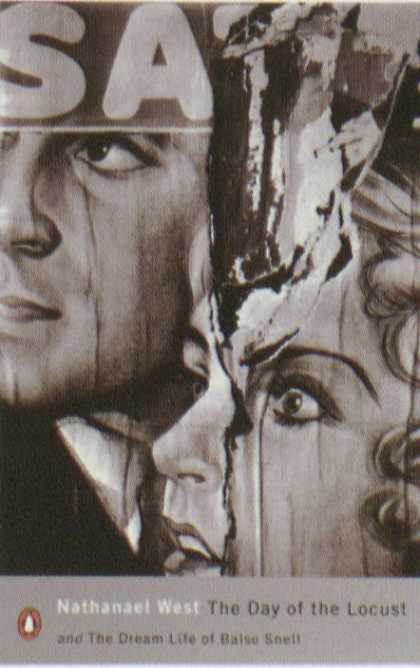 The Day of the Locust by Nathanael West (1939). Hollywood is not alluring in this savage, apocalyptic novel about fame and its perversions. Painter Tod Hackett comes to Hollywood to design sets and find success. Instead, he finds a population of the physically and psychically maimed crouching at the edges of the film industry, desperately believing that only luck and time separate them from stardom. At the end, their disappointment explodes into violence and Tod sums up his despair with his single great painting: The Burning of Los Angeles.
The Day of the Locust by Nathanael West (1939). Hollywood is not alluring in this savage, apocalyptic novel about fame and its perversions. Painter Tod Hackett comes to Hollywood to design sets and find success. Instead, he finds a population of the physically and psychically maimed crouching at the edges of the film industry, desperately believing that only luck and time separate them from stardom. At the end, their disappointment explodes into violence and Tod sums up his despair with his single great painting: The Burning of Los Angeles.
Total Points: 9 (MCon 9)
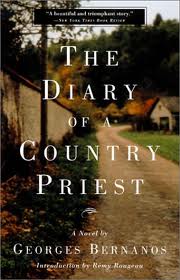 The Diary of a Country Priest by Georges Bernanos (1937). A profound story of Christian faith constructed of the thoughts, half-thoughts, jottings, and observations, the joys and disappointments, of a priest in provincial France. The protagonist suffers through the novel—he is a martyr to a dark, often wicked world. But as he declines, the grace he receives builds.
The Diary of a Country Priest by Georges Bernanos (1937). A profound story of Christian faith constructed of the thoughts, half-thoughts, jottings, and observations, the joys and disappointments, of a priest in provincial France. The protagonist suffers through the novel—he is a martyr to a dark, often wicked world. But as he declines, the grace he receives builds.
Total Points: 9 (MG 9)
 The Fall by Albert Camus (1956). In conversations with a chance acquaintance, a once-successful Paris lawyer recounts his fall into psychological self-destruction after ignoring a woman drowning in the Seine. Ultimately, this existential antihero persuades himself that all good works are motivated by self-interest, all virtue merely a ploy for success or popularity. With no hope of redemption, he descends into debauchery and profligacy, impatient for the relative simplicity of death.
The Fall by Albert Camus (1956). In conversations with a chance acquaintance, a once-successful Paris lawyer recounts his fall into psychological self-destruction after ignoring a woman drowning in the Seine. Ultimately, this existential antihero persuades himself that all good works are motivated by self-interest, all virtue merely a ploy for success or popularity. With no hope of redemption, he descends into debauchery and profligacy, impatient for the relative simplicity of death.
Total Points: 9 (IP 9)
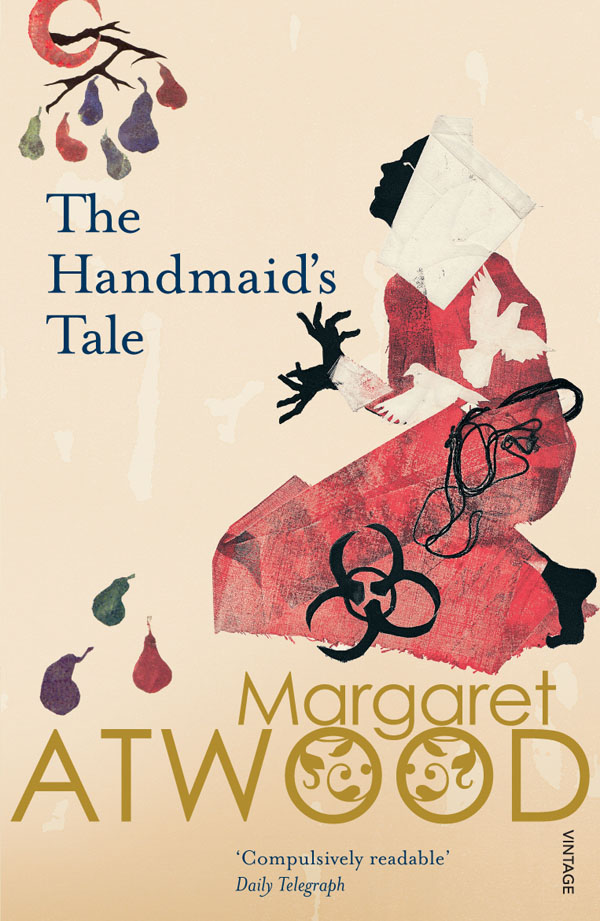 The Handmaid’s Tale by Margaret Atwood (1986). Atwood offers another piercing fiction about humankind’s place in nature and women’s place in society in this chilling futuristic novel in which widespread sterility has led to totalitarian control of procreation. Offred has been forced into service as a Handmaid and will become a surrogate mother if the Commander manages to impregnate her before his embittered wife harms her. Garbed in a red habit and living like a slave, Offred covertly records her harrowing story, finding freedom in preserving her observations and in expressing her mordant wit and unnerving wisdom.
The Handmaid’s Tale by Margaret Atwood (1986). Atwood offers another piercing fiction about humankind’s place in nature and women’s place in society in this chilling futuristic novel in which widespread sterility has led to totalitarian control of procreation. Offred has been forced into service as a Handmaid and will become a surrogate mother if the Commander manages to impregnate her before his embittered wife harms her. Garbed in a red habit and living like a slave, Offred covertly records her harrowing story, finding freedom in preserving her observations and in expressing her mordant wit and unnerving wisdom.
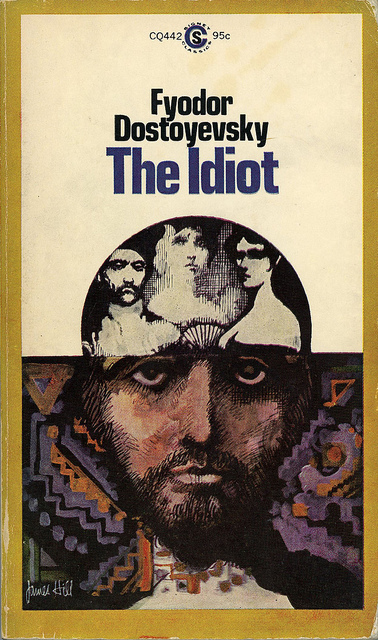 The Idiot by Fyodor Dostoevsky (1868). Prince Myshkin—epileptic, unworldly, sensitive—is the “idiot” of the title, but his gentle, generous nature forces readers to question that assumption. Myshkin (a scarcely disguised self-portrait of the author) tries again and again to help the people he encounters, only to have his efforts mocked or misunderstood. On the surface a love story, the novel is a contemplation of goodness in the world, and while its conclusions are dark, the portrait of this simple, good man endures.
The Idiot by Fyodor Dostoevsky (1868). Prince Myshkin—epileptic, unworldly, sensitive—is the “idiot” of the title, but his gentle, generous nature forces readers to question that assumption. Myshkin (a scarcely disguised self-portrait of the author) tries again and again to help the people he encounters, only to have his efforts mocked or misunderstood. On the surface a love story, the novel is a contemplation of goodness in the world, and while its conclusions are dark, the portrait of this simple, good man endures.
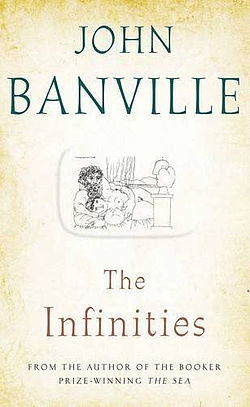 The Infinities by John Banville (2009). On a languid midsummer’s day in the countryside, the Godley family gathers at the bedside of Adam, a renowned mathematician and their patriarch. But they are not alone in their vigil. Around them hovers a clan of mischievous immortals—Zeus, Pan, and Hermes among them —who begin to stir up trouble for the Godleys, to sometimes wildly unintended effect in this gloriously earthy romp that offers a wise look at the terrible, wonderful plight of being human.
The Infinities by John Banville (2009). On a languid midsummer’s day in the countryside, the Godley family gathers at the bedside of Adam, a renowned mathematician and their patriarch. But they are not alone in their vigil. Around them hovers a clan of mischievous immortals—Zeus, Pan, and Hermes among them —who begin to stir up trouble for the Godleys, to sometimes wildly unintended effect in this gloriously earthy romp that offers a wise look at the terrible, wonderful plight of being human.
Total Points: 9 (TJ 9)
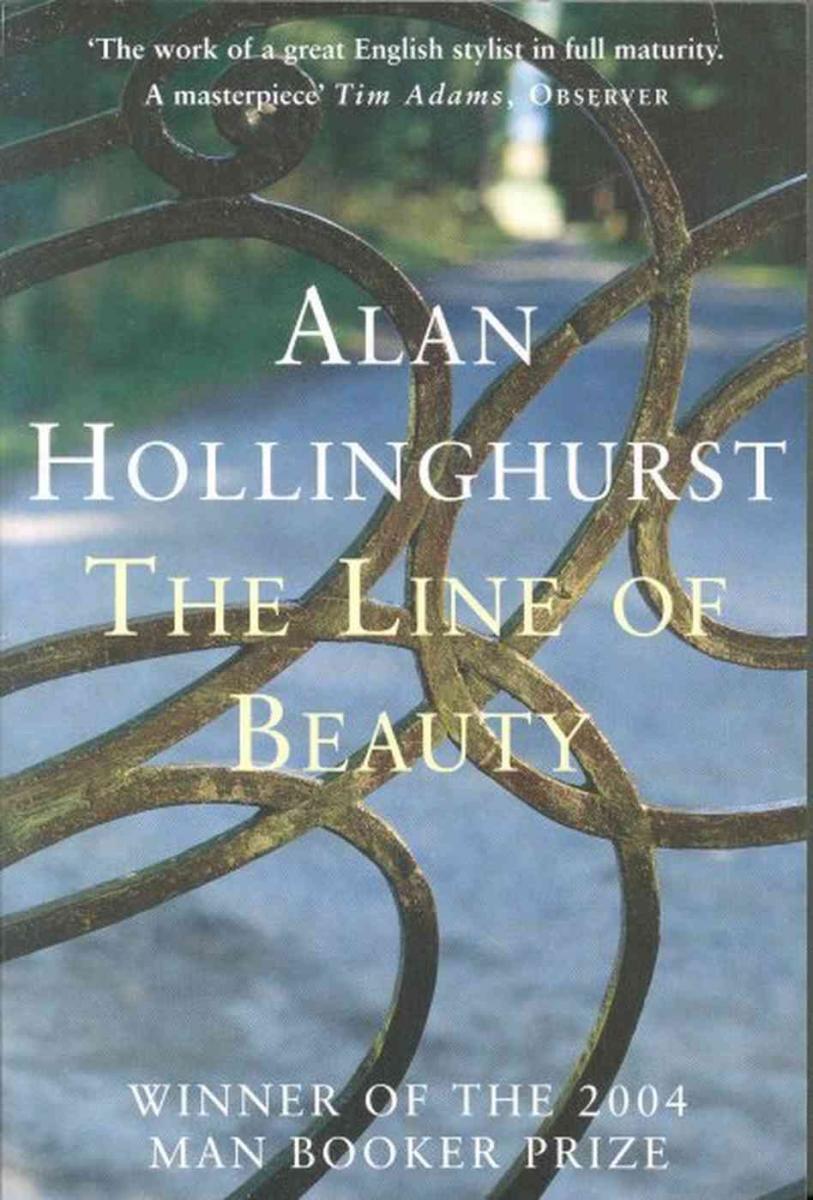 The Line of Beauty by Alan Hollinghurst (2004). Nick Guest is a young gay man desperate for love, the son of a modest antiques dealer who wants to climb the social ladder. In gorgeous, closely observed prose reminiscent of Henry James, much of this Booker Prize–winning novel chronicles Nick’s amorous and social ascents in the drug-and sex-fueled world of 1980s England. Then comes AIDS and the cold, hard punch of Margaret Thatcher’s policies, which leave everyone on their own, including Nick.
The Line of Beauty by Alan Hollinghurst (2004). Nick Guest is a young gay man desperate for love, the son of a modest antiques dealer who wants to climb the social ladder. In gorgeous, closely observed prose reminiscent of Henry James, much of this Booker Prize–winning novel chronicles Nick’s amorous and social ascents in the drug-and sex-fueled world of 1980s England. Then comes AIDS and the cold, hard punch of Margaret Thatcher’s policies, which leave everyone on their own, including Nick.
Total Points: 9 (AS 9)
 The Master by Colm Tóibín (2004). In beautiful, perceptive prose suggestive of its subject, this novel brings readers inside the conflicted mind and soul of Henry James. Set between 1895 and 1899, when a mid-career James was reassessing his life, the novel flows with memories of his youth and accomplished family members. What emerges is the portrait of a man determined to avoid complications—especially those posed by homosexuality; who wrestles with his need to turn his life into art, and his desire to push away life so he can create his art.
The Master by Colm Tóibín (2004). In beautiful, perceptive prose suggestive of its subject, this novel brings readers inside the conflicted mind and soul of Henry James. Set between 1895 and 1899, when a mid-career James was reassessing his life, the novel flows with memories of his youth and accomplished family members. What emerges is the portrait of a man determined to avoid complications—especially those posed by homosexuality; who wrestles with his need to turn his life into art, and his desire to push away life so he can create his art.
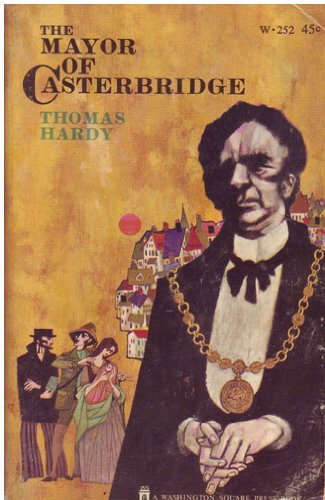 The Mayor of Casterbridge by Thomas Hardy (1886). In the first chapter Michael Henchard sells his wife and child at a country fair. When he meets his forsaken wife Susan and daughter Elizabeth-Jane years later, he is no longer a drunken hay-trusser but mayor of his town. Henchard has improved his position in life but not his disposition, and this tragedy of misplaced pride, torturous guilt, and immense bitterness is vintage Hardy.
The Mayor of Casterbridge by Thomas Hardy (1886). In the first chapter Michael Henchard sells his wife and child at a country fair. When he meets his forsaken wife Susan and daughter Elizabeth-Jane years later, he is no longer a drunken hay-trusser but mayor of his town. Henchard has improved his position in life but not his disposition, and this tragedy of misplaced pride, torturous guilt, and immense bitterness is vintage Hardy.
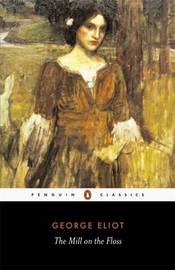 The Mill on the Floss by George Eliot (1860). Familial duty has seldom been so sadly rendered, and Eliot drew much from her own childhood in creating Maggie Tulliver and her self-righteous brother Tom. Passionate Maggie gives up her lover out of propriety and deference to Tom, but the character was thought so wicked that many nineteenth-century girls were forbidden to read this book. Despite having lived with a married man herself, Eliot dealt Maggie a harsh fate.
The Mill on the Floss by George Eliot (1860). Familial duty has seldom been so sadly rendered, and Eliot drew much from her own childhood in creating Maggie Tulliver and her self-righteous brother Tom. Passionate Maggie gives up her lover out of propriety and deference to Tom, but the character was thought so wicked that many nineteenth-century girls were forbidden to read this book. Despite having lived with a married man herself, Eliot dealt Maggie a harsh fate.
Total Points: 9 (BU 9)
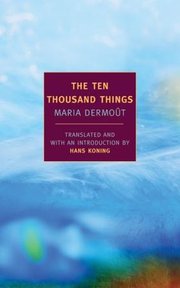 The Ten Thousand Things by Maria Dermout (1955). Dermout was sixty-seven years old when she debuted with this semiautobiographical novel about a Dutch woman named Felicia raising her son in the Spice Islands of Indonesia. Felicia has a keen appreciation for the beauty and mystery of this lush and exotic world where spirits hover; she describes pearls as “tears of the sea” while telling her boy the ten thousand things that make the island. Her love of life and nature is challenged by violence and murder that bring sadness and summon the courage of resilience.
The Ten Thousand Things by Maria Dermout (1955). Dermout was sixty-seven years old when she debuted with this semiautobiographical novel about a Dutch woman named Felicia raising her son in the Spice Islands of Indonesia. Felicia has a keen appreciation for the beauty and mystery of this lush and exotic world where spirits hover; she describes pearls as “tears of the sea” while telling her boy the ten thousand things that make the island. Her love of life and nature is challenged by violence and murder that bring sadness and summon the courage of resilience.
Total Points: 9 (SC 9)
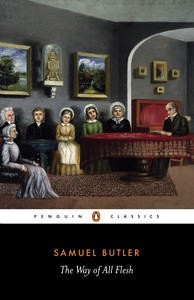 The Way of All Flesh by Samuel Butler (1903). One of the great critiques of Victorian society and morality, this autobiographical novel charts the Pontifex family over several generations. Through the rise and fall of the main character’s piety, Butler rebukes a religious tradition that has grown oppressive and hypocritical. Though he completed the novel in 1884, Butler, a clergyman’s son, refused to publish this, his greatest work, during his lifetime.
The Way of All Flesh by Samuel Butler (1903). One of the great critiques of Victorian society and morality, this autobiographical novel charts the Pontifex family over several generations. Through the rise and fall of the main character’s piety, Butler rebukes a religious tradition that has grown oppressive and hypocritical. Though he completed the novel in 1884, Butler, a clergyman’s son, refused to publish this, his greatest work, during his lifetime.
Total Points: 9 (PE 9)
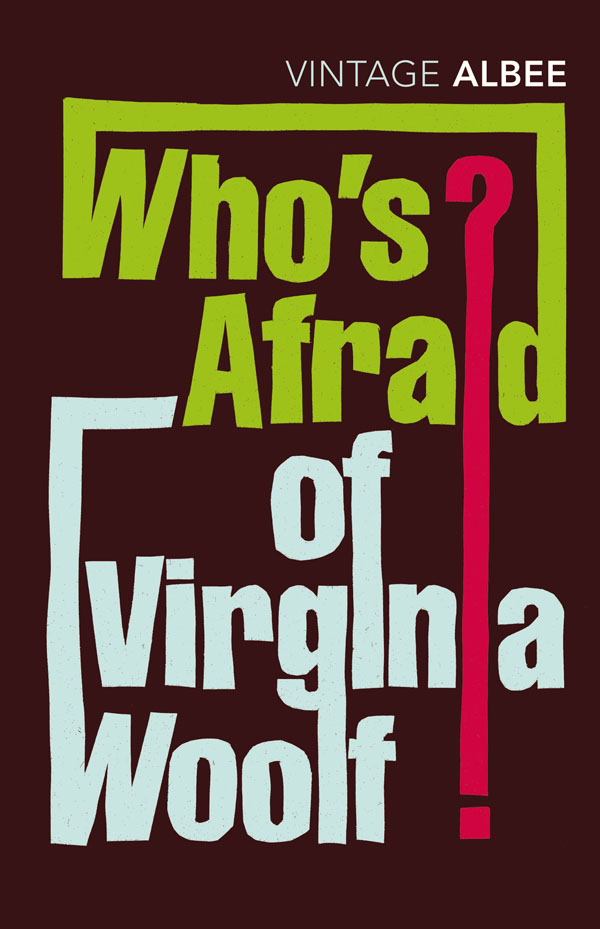 The Zoo Story (1958), The American Dream (1961), and Who’s Afraid of Virginia Woolf? (1962), three plays by Edward Albee. Albee is American dramaturgy’s master of black comedy and social satire. In The American Dream he lambasts that concept in a one-act farce featuring an over-the-top dysfunctional family and a murder. In The Zoo Story, a psychotic loner cannily provokes a complacent bourgeois into killing him. In the Pulitzer Prize–winning Who’s Afraid of Virginia Woolf?, an older couple savage each other and their unsuspecting guests at the dinner party from hell, until the climactic revelation of the secret that binds them together. Albee’s plays are less performances than ritual flayings, stripping away all pretense and artificiality in family and social life to lay bare the bleeding vitals.
The Zoo Story (1958), The American Dream (1961), and Who’s Afraid of Virginia Woolf? (1962), three plays by Edward Albee. Albee is American dramaturgy’s master of black comedy and social satire. In The American Dream he lambasts that concept in a one-act farce featuring an over-the-top dysfunctional family and a murder. In The Zoo Story, a psychotic loner cannily provokes a complacent bourgeois into killing him. In the Pulitzer Prize–winning Who’s Afraid of Virginia Woolf?, an older couple savage each other and their unsuspecting guests at the dinner party from hell, until the climactic revelation of the secret that binds them together. Albee’s plays are less performances than ritual flayings, stripping away all pretense and artificiality in family and social life to lay bare the bleeding vitals.
Total Points: 9 (AMH 9)
 Treasure Island by Robert Louis Stevenson (1881–82). Young John Hawkins was told to beware a man with one leg. But after discovering a treasure map, he acquires a ship and hires—you guessed it—one-legged Long John Silver to cook for his ship and hire the crew, a band of villainous pirates. After writing this thrilling tale of adventure for his stepson, Stevenson remarked: “If this don’t fetch the kids, why, they have gone rotten since my day.”
Treasure Island by Robert Louis Stevenson (1881–82). Young John Hawkins was told to beware a man with one leg. But after discovering a treasure map, he acquires a ship and hires—you guessed it—one-legged Long John Silver to cook for his ship and hire the crew, a band of villainous pirates. After writing this thrilling tale of adventure for his stepson, Stevenson remarked: “If this don’t fetch the kids, why, they have gone rotten since my day.”
Total Points: 9 (TK 9)
 Wheat That Springeth Green by J. F. Powers (1975). Joe Hackett wanted to be a saint. While training for the priesthood he wore the hair shirt and abandoned the pleasures of “smokes, sweets, snacks, snooker, and handball.” Twenty-five years later, his ideals dampened, his passions are baseball and beer. The arrival of an idealistic curate slowly snaps him back to life, “like wheat that springeth green,” in this comic novel about both the tension between earthly and spiritual goals and their mutual dependence.
Wheat That Springeth Green by J. F. Powers (1975). Joe Hackett wanted to be a saint. While training for the priesthood he wore the hair shirt and abandoned the pleasures of “smokes, sweets, snacks, snooker, and handball.” Twenty-five years later, his ideals dampened, his passions are baseball and beer. The arrival of an idealistic curate slowly snaps him back to life, “like wheat that springeth green,” in this comic novel about both the tension between earthly and spiritual goals and their mutual dependence.
Total Points: 9 (AP 9)
 Woman Hollering Creek by Sandra Cisneros (1991). This story collection draws on the author’s experiences growing up between two worlds and cultures – Mexico and the United States. Often alluding to Mexican history and folklore, she poignantly depicts women who often struggle to find their authentic selves in a modern culture that is not their own.
Woman Hollering Creek by Sandra Cisneros (1991). This story collection draws on the author’s experiences growing up between two worlds and cultures – Mexico and the United States. Often alluding to Mexican history and folklore, she poignantly depicts women who often struggle to find their authentic selves in a modern culture that is not their own.
 A Man of the People by Chinua Achebe (1966). This “bitter yet funny satire” as Anthony Burgess described it foreshadows the Nigerian coups of 1966 and shows the color and vivacity as well as the violence and corruption of a society making its own way between the two worlds.
A Man of the People by Chinua Achebe (1966). This “bitter yet funny satire” as Anthony Burgess described it foreshadows the Nigerian coups of 1966 and shows the color and vivacity as well as the violence and corruption of a society making its own way between the two worlds.
Total Points: 8 (LL 8)
A Sportsman’s Notebook by Ivan Turgenev (1852). Set in the Russian countryside, this series of linked, introspective story-essays describes the rambles of a young nobleman shooting game on the vast estates of Russia’s aristocracy. As Turgenev depicts the beauteous intricacies of the natural world, he captures the suffering of Russian serfs, helping to convince his country’s leaders to abolish the feudal system.
Total Points: 8 (DMe 8)
 Almost Paradise (1984) and Shining Through (1988) by Susan Isaacs. The best-selling author’s gift for creating strong heroines and crisp dialogue are on display in these engrossing tales of romance. Almost Paradise examines the price a married couple—he’s a blue-eyed blue-blooded movie star, she’s a brilliant, half-Jewish woman with a less than illustrious pedigree—pay for fame. Set before and during World War II, Shining Through mixes romance with espionage as a poor girl from Queens marries the most handsome lawyer on Wall Street and eventually is sent on a secret mission to wartime Berlin.
Almost Paradise (1984) and Shining Through (1988) by Susan Isaacs. The best-selling author’s gift for creating strong heroines and crisp dialogue are on display in these engrossing tales of romance. Almost Paradise examines the price a married couple—he’s a blue-eyed blue-blooded movie star, she’s a brilliant, half-Jewish woman with a less than illustrious pedigree—pay for fame. Set before and during World War II, Shining Through mixes romance with espionage as a poor girl from Queens marries the most handsome lawyer on Wall Street and eventually is sent on a secret mission to wartime Berlin.
Total Points: 8 (JW 8)
 Austerlitz by W. G. Sebald (2001). During decades of travels through Europe, a nameless architectural historian accidentally keeps meeting Austerlitz, a neurasthenic architect who is incrementally confronting his buried connection to the Holocaust. Incantatory and almost vertiginous in its repetitiveness, this one-paragraph novel depicts the struggle of a personal narrative to melt the frozen memory of collective trauma.
Austerlitz by W. G. Sebald (2001). During decades of travels through Europe, a nameless architectural historian accidentally keeps meeting Austerlitz, a neurasthenic architect who is incrementally confronting his buried connection to the Holocaust. Incantatory and almost vertiginous in its repetitiveness, this one-paragraph novel depicts the struggle of a personal narrative to melt the frozen memory of collective trauma.
 Bel-Ami by Guy de Maupassant (1885). Like a late nineteenth-century Tom Wolfe, Maupassant reveals the codes and rivalries of social success by chronicling the rise of Georges Duroy, a handsome, down on his heels ex-soldier. Duroy’s chance comes when an old army buddy hires him at his newspaper, La Vie Parisienne. Georges rewards his friend by coveting his wife, Madeleine, a smart, energetic free spirit who seems like Madame Bovary—after successful therapy. When her husband dies, Georges proposes literally over his corpse. But soon he is looking even higher . . .
Bel-Ami by Guy de Maupassant (1885). Like a late nineteenth-century Tom Wolfe, Maupassant reveals the codes and rivalries of social success by chronicling the rise of Georges Duroy, a handsome, down on his heels ex-soldier. Duroy’s chance comes when an old army buddy hires him at his newspaper, La Vie Parisienne. Georges rewards his friend by coveting his wife, Madeleine, a smart, energetic free spirit who seems like Madame Bovary—after successful therapy. When her husband dies, Georges proposes literally over his corpse. But soon he is looking even higher . . .
Total Points: 8 (TW 8)
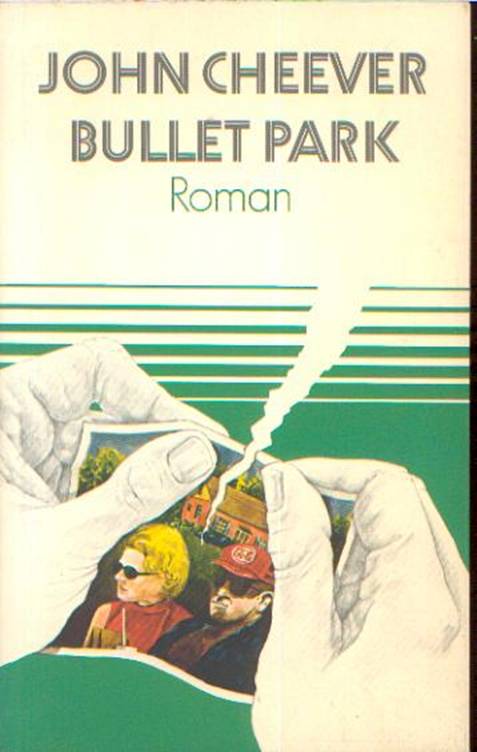 Bullet Park by John Cheever (1967). Happily married with one child, Eliot Nailles is a chemist working to make better mouthwash. Paul Hammer is a Yale graduate and aimless drifter who moves to Nailles’s leafy suburb of Bullet Park. There he plans to take revenge on the bourgeoisie—by murdering Nailles’s son.
Bullet Park by John Cheever (1967). Happily married with one child, Eliot Nailles is a chemist working to make better mouthwash. Paul Hammer is a Yale graduate and aimless drifter who moves to Nailles’s leafy suburb of Bullet Park. There he plans to take revenge on the bourgeoisie—by murdering Nailles’s son.
Total Points: 8 (AMH 8)
![]() Collected Stories of Elizabeth Bowen (1899-1973). Widely known for her extraordinary novels, including The Heat of the Day, The House in Paris, and The Death of the Heart, Elizabeth Bowen was also a master of the short story. Whether placing her reader in a remote Irish castle or a seaside Italian villa or bomb-scarred London during the Blitz, Bowen was famous for scene-setting of almost hallucinatory vividness, but her ability to evoke inner landscapes of spellbinding intensity was even more remarkable. Frustrated lovers, acutely observed children, and even vengeful ghosts inhabit her tales with an urgency and emotional complexity that make it clear that the drama of human consciousness was her central subject. Bowen’s best known stories, including “Mysterious Kôr,” “The Demon Lover,” “Summer Night,” “Ivy Gripped the Steps,” and “The Happy Autumn Fields,” are enduring testimony to Bowen’s reputation as a creator of finely chiseled narratives—rich in imagination, psychological insight, and craft—that transcend their time and place.
Collected Stories of Elizabeth Bowen (1899-1973). Widely known for her extraordinary novels, including The Heat of the Day, The House in Paris, and The Death of the Heart, Elizabeth Bowen was also a master of the short story. Whether placing her reader in a remote Irish castle or a seaside Italian villa or bomb-scarred London during the Blitz, Bowen was famous for scene-setting of almost hallucinatory vividness, but her ability to evoke inner landscapes of spellbinding intensity was even more remarkable. Frustrated lovers, acutely observed children, and even vengeful ghosts inhabit her tales with an urgency and emotional complexity that make it clear that the drama of human consciousness was her central subject. Bowen’s best known stories, including “Mysterious Kôr,” “The Demon Lover,” “Summer Night,” “Ivy Gripped the Steps,” and “The Happy Autumn Fields,” are enduring testimony to Bowen’s reputation as a creator of finely chiseled narratives—rich in imagination, psychological insight, and craft—that transcend their time and place.
Total Points: 8 (EWhite 8)
 Deptford trilogy by Robertson Davies (1983). A single question—“Who killed Boy Staunton?”—hovers over this trilogy that begins when ten-year-old Percy “Boy” Staunton throws a rock-filled snowball at his friend Dunstan Ramsay. Instead he hits Mary Dempster, who soon gives birth, prematurely, to a boy with birth defects. The novels Fifth Business, The Manticore, and World of Wonders chronicle the lives of these characters and their families, developing themes of guilt, love, and responsibility while detailing “the consequences that can follow any single action.”
Deptford trilogy by Robertson Davies (1983). A single question—“Who killed Boy Staunton?”—hovers over this trilogy that begins when ten-year-old Percy “Boy” Staunton throws a rock-filled snowball at his friend Dunstan Ramsay. Instead he hits Mary Dempster, who soon gives birth, prematurely, to a boy with birth defects. The novels Fifth Business, The Manticore, and World of Wonders chronicle the lives of these characters and their families, developing themes of guilt, love, and responsibility while detailing “the consequences that can follow any single action.”